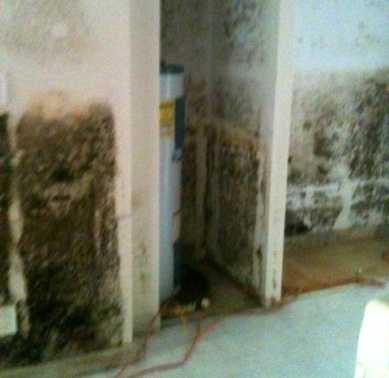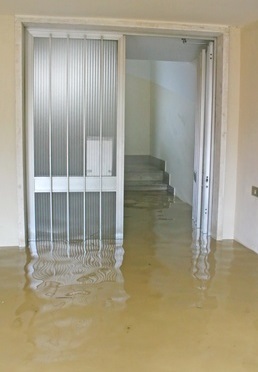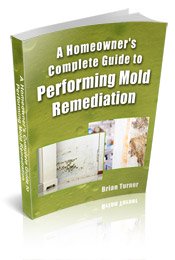Find a Mold Specialist Now
Click or Call, Toll-Free 24/7
Water Damage Remediation
Preventing Mold
When a flood or water damage occurs, there is a short window of time when water damage remediation is essential to prevent bigger problems. If water damage is left untreated or partially treated, mold water damage may begin… which can cause long-term problems and damage the health of people exposed to the mold growth in the building. If steps are taken within the first 24-48 hours after the water damage occurs, it is possible to avoid these mold problems.
Initial Water Cleanup Processes
As soon as a building is exposed to water from flooding or leaking, a few steps can be followed in order to prevent mold water damage. The first step to water damage remediation is obviously to stop the source of the flooding problems, and this usually involves repairing pipes or stopping a leak from outside. Next, excess water needs to be removed with heavy duty vacuums, fans can be used to dry the affected area, and dehumidifiers help to remove the moisture from the air.
It may also be necessary to pull up any carpet or other flooring that was affected by the water. Insulation, ceiling tiles, and other porous surfaces may need to be removed and replaced depending on the damage that has occurred. If these materials are not replaced, they can provide the perfect breeding ground for mold water damage because they will continue to hold the moisture for a long time.
During the first 24 hours, it is possible to salvage some of the items within the building. For example, certain types of electronics may be usable such as computers, medical equipment, fax machines, printers, etc. When these things are removed from the flood site, it is necessary to turn off the power and keep them off for several days. Corrosion can be prevented by decreasing the humidity by drying out the equipment.
When Mold Begins to Grow
It usually takes about 48 hours for the mold to begin to grow, and if areas within the building have been wet for this period of time it is necessary to take additional water damage remediation steps in order to stop the mold water damage. Keep in mind, 48 hours is a general rule of thumb and mold may begin to grow faster if the building is located in a humid area.
If there is doubt about whether or not the building materials may be affected by mold, professionals should be consulted in order to determine if there are mold spores present. If the mold is not visible to the naked eye, it can still be present, and the only way to be sure is with professional tests to determine the mold growth. You can follow this link to get a listing of Certified Mold Testers in your area.
The Effectiveness of Water Damage Remediation
Taking immediate action can lower the costs of replacing the items within the home. Depending on the severity of the water damage, it is possible to salvage flooring and carpet if certain techniques are used immediately to dry them quickly.
If the dampness is left untreated and mold begins to grow, the costs will increase because of the mold spores that need to be removed. Some people try to cut costs by ignoring what seems to be a minor mold problem, however the mold will continue to grow and often result in a bigger problem because of mold cross contamination throughout the structure of the building.
Water damage remediation is a big project, and in most cases the situation should be handled by professionals in order to prevent more serious problems such as those seen in the picture below. The picture shows extensive mold growth in a home that had flooding.
When You Need to Consult a Professional
In some instances, it’s especially important to consult a professional.
- The Environmental Protection Agency (EPA) advises homeowners to consult a professional if they have mold growth or water damage as a result of flooding with contaminated water, such as water that may contain sewage. If you’re not sure about the safety or cleanliness of the water that damaged your home, talk to a professional to make sure you’re not dealing with anything hazardous.
- If you’re not sure you’ve located all the mold in your home, schedule a consultation with a professional who will inspect your home for mold and make sure all the mold has been found. Mold often grows in hidden places and if you miss even a little during the clean up process, it will just grow and spread.
- If you have mold growing in your heating and air conditioning ducts, it’s best to have a professional assist with the clean up. It’s difficult to reach mold inside air ducts and special equipment is often needed. If you miss any mold in the ventilation system, as soon as you turn on your furnace or air conditioner, mold spores will be dispersed throughout the home.
- If you have a history of asthma or any breathing disorders, it’s best to have a professional handle the mold cleanup so that you aren’t exposed to mold spores that can trigger asthma attacks or otherwise make your condition worse.
Follow this link to get a list of licensed Water Damage Specialists in your area. The professionals on this list offer free consultations, so you can speak with a professional about your problem free of charge.
Return From Water Damage Remediation To Our Mold And Water Damage Specialists Page
Black Mold Health Symptoms Home Page







